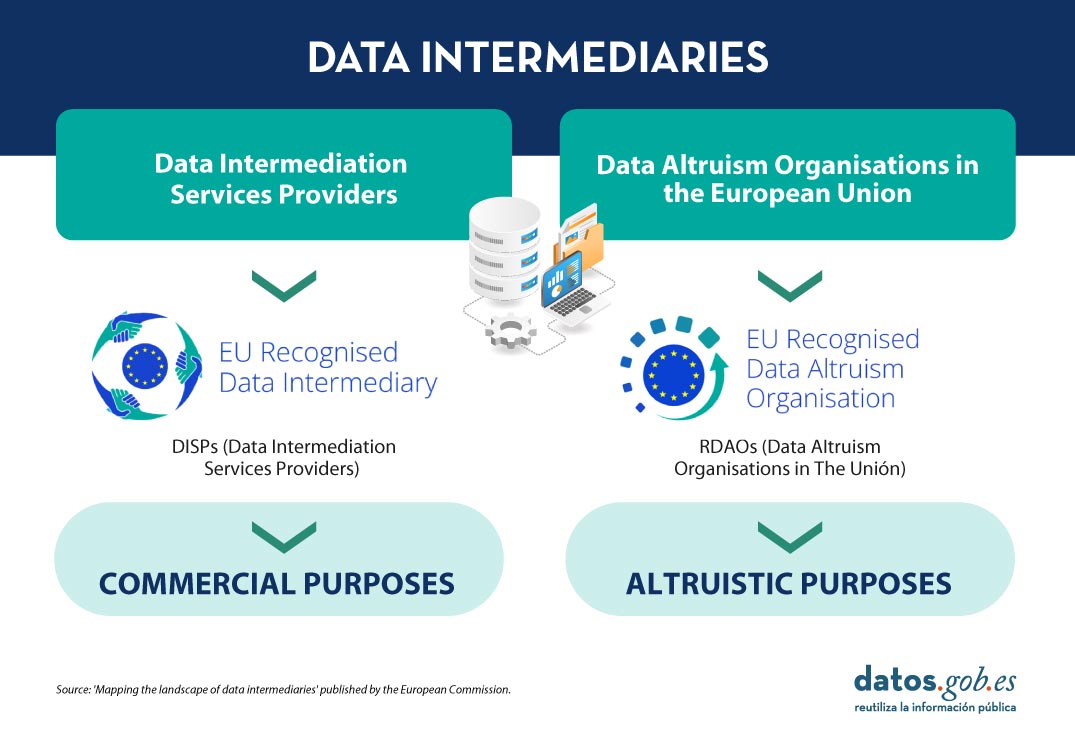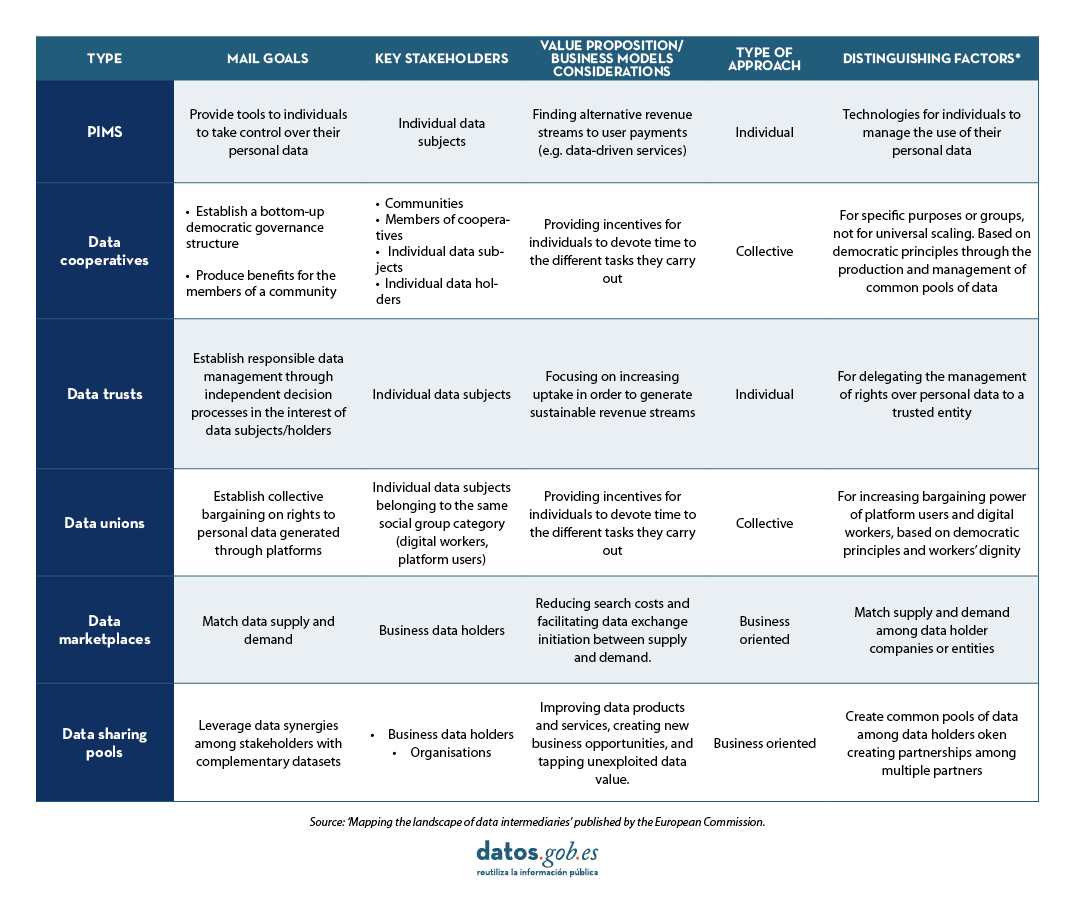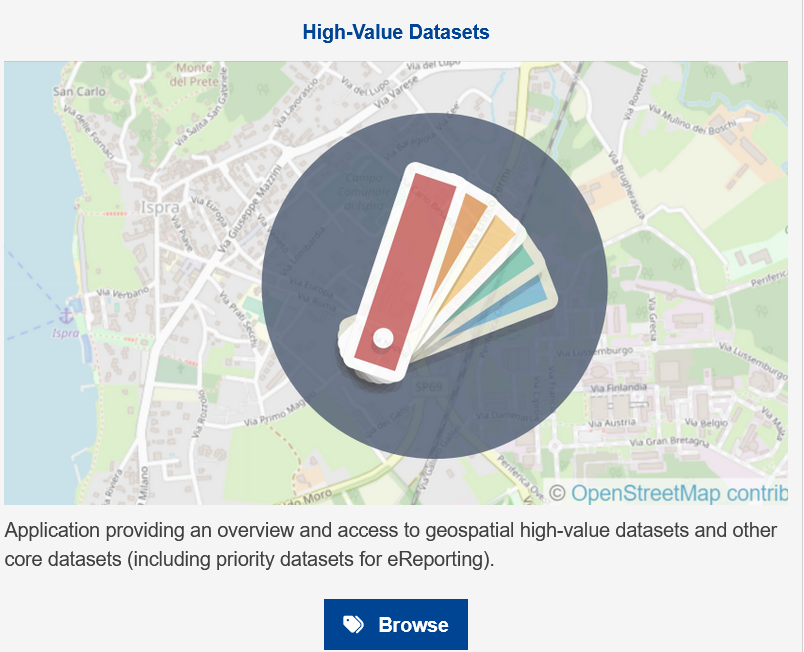
Data is a key part of Europe''s digital economy. This is recognised in the Data Strategy, which aims to create a single market that allows free movement of data in order to foster digital transformation and technological innovation. However, achieving this goal involves overcoming a number of obstacles. One of the most salient is the distrust that citizens may feel about the process.
In response to this need, the Data Governance Act or Data Governance Act (DGA), a horizontal instrument that seeks to regulate the re-use of data over which third party rights concur, and to promote their exchange under the principles and values of the European Union. The objectives of the DGA include strengthening the confidence of citizens and businesses that their data is re-used under their control, in accordance with minimum legal standards.
Among other issues, the DGA elaborates on the concept ofdata intermediaries , for whom it establishes a reporting and monitoring framework.
What are data brokers?
The concept of data brokers is relatively new in the data economy, so there are multiple definitions. If focusing on the context of the DGAdata Intermediation Services Providers ( DISPs) are those "whose purpose is to establish commercial relationships for the exchange of data between an undetermined number of data subjects and data owners on the one hand, and data users on the other hand".
The Data Governance Act also differentiates betweenData Brokering Service Providers andData Altruism Organisations Recognised in the Union (RDAOs). The latter concept describes a data exchange relationship, but without seeking a profit for it, in an altruistic way.

What types of data brokering services exist according to the DGA?
Data brokering services are another piece of data sharing, as they make it easier for data subjects to share their data so that it can be reused. They canalso provide technical infrastructure and expertise to support interoperability between datasets, or act as mediators negotiating exchange agreements between parties interested in sharing, accessing or pooling data.
Chapter III of the Data Governance Act explains three types of data brokering services:
- Intermediation services between data subjects and their potential users, including the provision of technical or other means to enable such services. They may include the bilateral or multilateral exchange of data, as well as the creation of platforms, databases or infrastructures enabling their exchange or common use.
- Intermediation services between natural persons wishing to make their personal and non-personal data availableto potential users, including technical means. These services should make it possible for data subjects to exercise their rights as provided for in the General Data Protection Regulation (Regulation 2016/679).
- Data cooperatives. These are organisational structures made up of data subjects, sole proprietorships or SMEs. These entities assist cooperative members in exercising their rights over their data.
In summary, the first type of service can facilitate the exchange of industrial data, the second focuses mainly on the exchange of personal data and the third covers collective data exchange and related governance schemes.
Categories of data intermediaries in detail:
To explore these concepts further, the European Commission has published the report ''...Mapping the landscape of data intermediariesthereport examines in depth the types of data brokering that exist. The report''s findings highlight the fragmentation and heterogeneity of the field.
Types of data brokers range from individualistic and business-oriented to more collective and inclusive models that support greater participation in data governance by communities and individual data subjects. Taking into account the categories included in the DGA, six types of data intermediaries are described:
| Types of data broikering services according to the DGA | Equivalence in the report ''Mapping the landscape of data intermediaries'' |
|---|---|
| Intermediation services between data sujcets and potential data users (I) |
|
| Intermediation services between data subjects or individuals and data users (II) |
|
| Data cooperatives (III) |
|
Source: Mapping the landscape of data intermediaries published by the European Comission
Each of these is described below:

- Personal Information Management Systems (PIMS): provides tools for individuals to control and direct the processing of their data.
- Data cooperatives: foster democratic governance through agreements between members. Individuals manage their data for the benefit of the whole community.
- Data trusts: establish specific legal mechanisms to ensure responsible and independent management of data between two entities, an intermediary that manages the data and its rights, and a beneficiary and owner of the data.
- Data syndicates: these are sectoral or territorial unions between different data owners that manage and protect the rights over personal data generated through platforms by both users and workers.
- Data marketplaces: these drive platforms that match supply and demand for data or data-based products/services.
- Data sharing pools: these are alliances between parties interested in sharing data to improve their assets (data products, processes and services) by taking advantage of the complementarity of the data pooled.
In order to consolidate data brokers, further research will be needed to help further define the concept of data brokers. This process will entail assessing the needs of developers and entrepreneurs on economic, legal and technical issues that play a role in the establishment of data brokers, the incentives for both the supply and demand side of data brokers, and the possible connections of data brokers with other EU data policy instruments.
The types of data intermediaries differ according to several parameters, but are complementary and may overlap in certain respects. For each type of data intermediary presented, the report provides information on how it works, its main features, selected examples and business model considerations.
Requirements for data intermediaries in the European Union
The DGA establishes rules of the game to ensure that data exchange service providers perform their services under the principles and values of the European Union (EU). Suppliers shall be subject to the law of the Member State where their head office is located. If you are a provider not established in the EU, you must appoint a legal representative in one of the Member States where your services are offered.
Any data brokering service provider operating in the EU must notify the competent authority. This authority shall be designated by each State and shall ensure that the supplier carries out its activity in compliance with the law. The notification shall include information on the supplier''s name, legal nature (including information on structure and subsidiaries), address, website with information on its activities, contact person and estimated date of commencement of activity. In addition, it shall include a description of the data brokering service it performs, indicating the category detailed in the GAD to which it belongs, i.e. brokering services between data subjects and users, brokering services between data subjects or individuals and data users or data cooperatives.
Furthermore, in its Article 12, the DGA lays down a number of conditions for the provision of data brokering services. For example, providers may not use the data in connection with the provision of their services, but only make them available. They must also respect the original formats and may only make transformations to improve their interoperability. They should also provide for procedures to prevent fraudulent or abusive practices by users. This is to ensure that services are neutral, transparent and non-discriminatory.
Future scenarios for data intermediaries
According to the report "Mapping the landscape of data intermediaries", on the horizon, the envisaged scenario for data intermediaries involves overcoming a number of challenges:
Identify appropriate business models that guarantee economic sustainability. Expand demand for data brokering services. Understand the neutrality requirement set by the DGA and how it could be implemented. Align data intermediaries with other EU data policy instruments. Consider the needs of developers and entrepreneurs. Meeting the demand of data intermediaries.


